Terrorists have also learned to make explosives from everyday products. The main culprit might be the Internet, which provides easy access to the necessary information. For example, the Australian government has started a campaign in favor of chemical security. Their plan is to raise awareness of common dangerous chemicals and have any suspicious behavior reported to their national security hotline.
However, many people think that their choice to publish an official list of 96 dangerous chemicals, which are approved for use in Australia, is a big mistake. Despite the people in charge stating that all the information was already available online before the campaign, some believe that the list is more likely to be found by terrorists than anyone wishing to report questionable activity.
10. Ammonium Nitrate
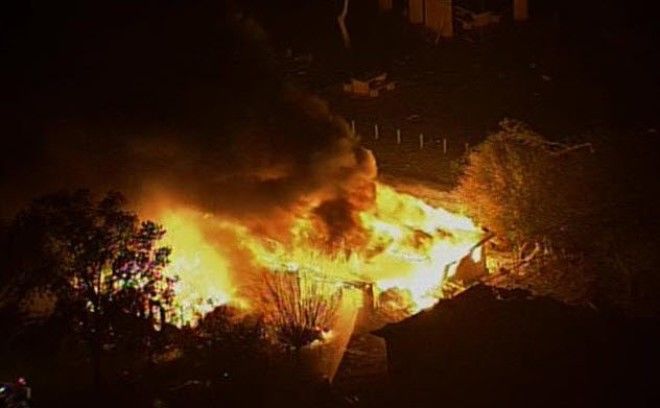
Ammonium nitrate was first produced in large amounts during the 1940s when it was used for munitions. It became available as a common fertilizer after the end of World War II. Due to the fertilizer’s high nutrient content and low manufacturing costs, it is commonly used as a source of nitrogen and ammonium.
As seen in the April 2013 blast at the West Fertilizer Company in West, Texas, a fertilizer plant catching on fire can be catastrophic. The farming community was flattened, with 15 people killed, over 200 injured, and 500 homes turned into rubble. An area used to store dangerous chemicals, including ammonium nitrate, left behind a 28-meter-wide (93 ft) crater. The force created by the explosion was equivalent to a magnitude 2.1 earthquake.
Ammonium nitrate is relatively stable under most conditions but explodes violently when it comes in contact with an open flame. This lethal downside also caused the deadliest industrial accident in US history. In 1947, a ship carrying about 2,300 tons of ammonium nitrate was set on fire by a carelessly thrown cigarette in the port of Texas City.
The explosion caused a chain reaction with a nearby ship, which was also carrying ammonium nitrate. People in Galveston, Texas, 16 kilometers (10 mi) away, were knocked down by the powerful blast. Further damage was caused by oil refineries and chemical tanks in the port catching on fire. The disaster is estimated to have killed 581 people.
Ammonium nitrate has also been used in several terrorist attacks. In 1995, a truck packed with the fertilizer was used to kill 168 people in Oklahoma City. In 2002, the chemical was used in a Bali nightclub bombing, killing 202 people. Another eight people died in a bombing in 2011 in Oslo, Norway.
The Department of Homeland Security established rules limiting the sale of the compound in 2011.
9. Butane

Butane is a gaseous fuel derived from petroleum. Butane fuel is produced by the fractional distillation of fossil fuels, meaning it is derived from naturally decaying organic matter. Cigarette lighters, camping, and backyard cooking are the primary uses of butane. Liquefied petroleum gas, which is made by blending butane and petroleum, is used in cars and heating appliances.
Although butane is considered to be a highly flammable gas rather than an explosive, it can easily explode in poorly ventilated areas if leaks go unnoticed and are ignited by spark or flame. For example, on March 6, 2018, a butane hash lab exploded in Gaylord, Michigan. Officials believe that the suspects were making a concentrated substance made from marijuana by blasting the plant with butane.
Individuals running the drug lab sustained significant injuries. The two suspects had already driven to a nearby hospital by the time authorities arrived. They were airlifted from the hospital to a burn unit due to their injuries. The apartment housing the lab was also damaged by the explosive blast pushing the apartment’s walls into neighboring units.
In 2017, a suicidal man plagued by relationship and financial problems wished to kill himself by gas inhalation in Singapore. He emptied cans of butane in his vehicle. But he ignited it with a spark from his lighter while lighting a cigarette.
He got out of the blast range, but the explosion damaged nine vehicles, including his rented Nissan Dualis. The 32-year-old man pleaded guilty to two counts of performing a rash act, one of mischief, and four unrelated cheating offenses.
8. Nitromethane
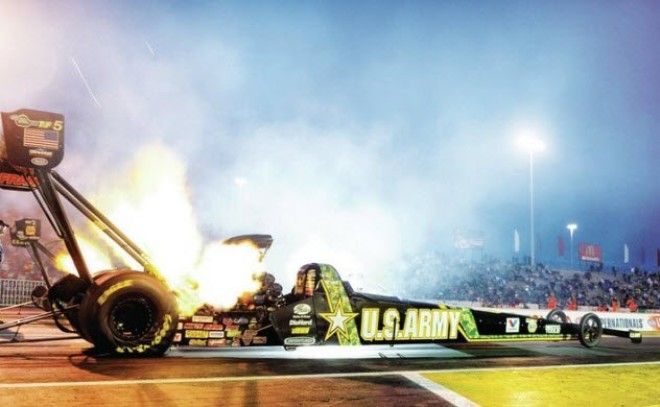
Over the course of 75 years, racing enthusiasts have tried every possible exotic fuel and power additive to increase their vehicles’ performance. Nitromethane has proven to be the most potent chemical. High doses of nitro provide enough power to put engines on the edge of destruction.
Nitromethane carries its own oxygen, making it a potential monopropellant that can combust without any air. That’s why the substance was once used as rocket fuel. Nitromethane also has industrial uses as a cleaning solvent and can help in synthesizing pesticides, pharmaceuticals, and coatings.
Dow Chemical Company has been manufacturing nitromethane products for 50 years. Their product safety assessment states that nitromethane can be handled safely as long as its hazardous properties are understood and unsafe conditions are avoided. Dangerous conditions include contamination by acids, bases, amines, or other “sensitizing” chemicals. It can also be hazardous to handle the substance at both elevated temperatures and increased pressure.
In the case of a chemical spill, a harmful level of contamination in the air can be quickly reached upon evaporation of nitromethane. Only explosion-proof equipment should be used for collecting and containing the spill.
Pure nitromethane has low toxicity and can cause respiratory tract irritation and central nervous system effects such as drowsiness, dizziness, headaches, unconsciousness, or even death. The chemical has also caused cancer in laboratory animal studies.
7. Picric Acid
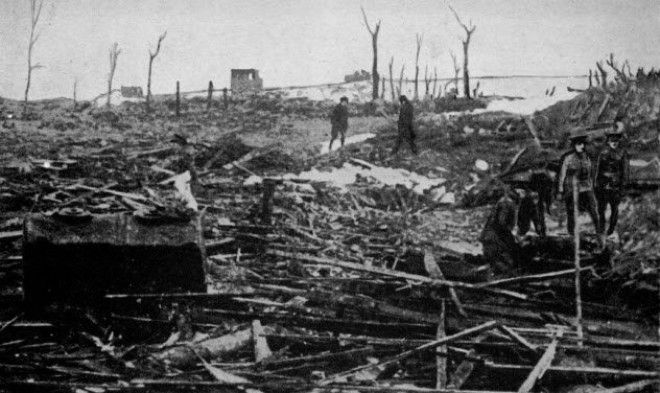
When wetted with not less than 10 percent water by mass, picric acid is a yellow mass of moist crystals or a slurry. It is dangerously explosive if allowed to dry out, but wetting reduces the risk of detonation. Picric acid is used in the synthesis of dyes, to manufacture matches and explosives, to make colored glass, to etch copper, and as a drug. The main reason for the decline of picric acid usage has been its toxic nature.
Picric acid was involved in the largest man-made explosion before Hiroshima. In 1917 during World War I, the US was shipping munitions to their allies in Britain and France. They put 3,000 tons of explosives on a 98-meter (320 ft) ship named SS Mont-Blanc. That is 13 times the weight of the Statue of Liberty. The explosives were TNT and picric acid, along with 400 barrels of airplane fuel loaded at the last minute.
The SS Imo, a 131-meter (430 ft) cargo ship was headed out of Halifax Harbor that morning. The Imo was late and went against maritime law, passing slower ships on the left to make up lost time.
Someone is going to be in your lane sooner or later if you pass on the left, just like a car. In this case, Mont-Blanc got in the way. Both captains saw their potential collision and repeatedly blew their whistles in an argument about who had the right of passage. Eventually, both put their engines in reverse, but it was too late to avoid a collision.
Some barrels of fuel were dislodged by the collision. Friction between the steel hulls of the ships resulted in sparks hitting the deck and igniting the fuel. Crew members, who knew about the ship’s secret contents, scrambled for lifeboats, rowed ashore, and ran for the woods.
The ship continued to burn for another 18 minutes. It was just before 9:00 AM, so kids going to school and adults going to work gathered around the dock to watch Mont-Blanc burn.
The ship exploded at 9:04 AM in all directions at 5,472 kilometers per hour (3,400 mph), which is four times the speed of sound. People closest to the ship were vaporized, while others were crushed by debris and collapsing buildings. Some drowned in the huge tsunami created by the blast.
Nearly 2,000 were killed, 9,000 were wounded, and 25,000 were left homeless. An anchor from the Mont-Blanc was found 3.2 kilometers (2 mi) away. The shock wave knocked plates off shelves in Prince Edward Island 177 kilometers (110 mi) away.
6. Erythritol Tetranitrate
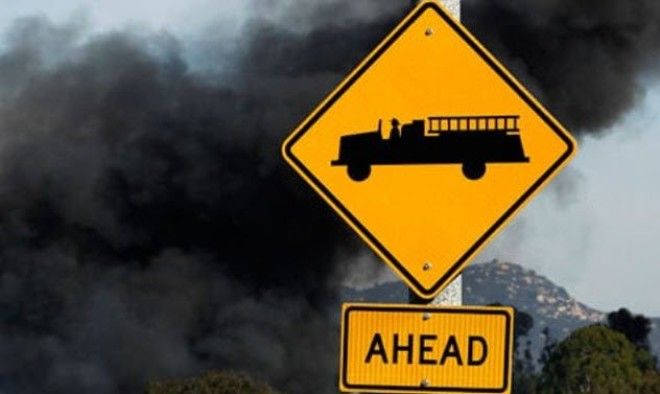
Undiluted erythritol tetranitrate can be exploded by excessive heat or percussion. The chemical is usually diluted with lactose to minimize explosion risks. Due to ease of production and high availability of erythritol, a natural sweetener, erythritol tetranitrate is commonly made at home by amateur experimenters.
The substance acts as a vasodilator, helping to widen blood vessels. Erythritol tetranitrate was also the active ingredient in the original sustained-release tablets called “nitroglyn.”
In April 2017, a 14-year-old boy in Northern Ireland faced a terrorism charge. He was accused of attempting to acquire a Soviet-era machine gun through the dark web and possessing a document containing instructions for the making of erythritol tetranitrate. The boy was also charged with attempting to possess a submachine gun and 100 rounds of ammunition earlier that year.
Banning computer access was one of the court’s bail conditions, but the ban was lifted to let the boy access the Internet for studies. He is allowed to use a computer between the hours of 5:00 PM and 8:00 PM under the supervision of his parents or his teachers while at school. Allegedly, the boy’s intentions were to “intimidate” a third party.
In 2010, a 54-year-old Serbian-born man was arrested in Escondido, California. He possessed the largest amount of homemade explosives ever found in one location in the US. Authorities found a maze of floor-to-ceiling junk and explosives in his home.
Bomb experts pulled out and detonated roughly 4 kilograms (9 lbs) of explosive materials, but continuing was too dangerous given the number of hazardous substances. Instead, a 5-meter (16 ft) fire wall was built around the property. The house was burned down within 30 minutes with firefighters standing by.
The chemicals found inside included hexamethylene triperoxide diamine, erythritol tetranitrate, and pentaerythritol tetranitrate, which were used in the 2001 airliner shoe-bombing attempt. Authorities also found molds of human faces, a blue police shirt, handguns, nine detonators, and 13 unfinished shrapnel grenades.
The former software engineer was accused of robbing three banks and making destructive devices. He was sentenced to 30 years in prison.
5. Gunpowder

Before the atomic bomb, the deadliest weapon was invented while searching for immortality. Chinese alchemists discovered gunpowder around AD 850 while conducting research on life-lengthening elixirs.
Scientists were experimenting with potassium nitrate (aka saltpeter). One individual decided to mix it with sulfur and charcoal. In a text dated from the mid-ninth century, observers remarked that the scientists’ hands and faces were burned after experimenting with the black powder. It had resulted in smoke and flames and even burned down the house in which they were working.
Their explosive invention was a Chinese monopoly until the 13th century when it spread to Europe through the ancient silk trade route. From there, gunpowder spread throughout the world and eventually became the basis for almost every weapon used in war from that point on. Fiery arrows, cannons, rifles, and grenades followed.
Today, gunpowder is still the basis for many modern weapons despite no longer being the most explosive force available. Modern firearms use a self-contained “cartridge” that neatly packages the gunpowder, the projectile, and a mechanism to ignite that gunpowder all in one. It is also commonly used in fireworks.
Gunpowder is considered to be a “low” explosive that rapidly burns in a tightly packed, confined space. Although it burns more often than “explodes,” a blast killed two people and injured five in February 2018 when an illegally stored cache of gunpowder caught fire near Thiruvalla, India.
The gunpowder was stocked in a shed for the devotees to offer vedi vazhipadu at the shrine. Windowpanes were broken in buildings within a 100-meter (328 ft) radius of the explosion.
4. Lead Styphnate

Lead styphnate is a primary explosive used in noncorrosive percussion primers, bridgewire-initiated compositions, detonators, and stab-initiated devices. Nearly all US commercial primer applications use this substance. Lead styphnate is also widely used in military electric initiators, where it accepts the transfer of heat from a bridgewire, deflagrates, and initiates energetic outputs.
Despite being a useful energetic material, the substance contains lead, a toxic heavy metal released into the environment during production and use. The toxic metal has become a serious health concern among gun enthusiasts.
Lead styphnate and gunpowder are used in gun and bullet production, making both of them especially common in US households where owning firearms is legal. There are about 16,000–18,000 indoor firing ranges in the US, roughly one million law enforcement officers who train regularly at these ranges, and 20 million people who practice target shooting as a leisure activity.
Research shows that people who use firearms risk lead poisoning. Exposure to lead from bullets and airborne particles in shooting ranges can reach levels in shooters’ blood that are high enough to pose a risk to health.
About 35 percent of the bullet primer is also made of lead styphnate and lead dioxide. The extreme heat from firing a bullet vaporizes some lead fragments, which are absorbed into the bloodstream after inhalation. Lead dust sticks to shooters’ clothes and can contaminate vehicles and homes. Some particles are also transferred hand to mouth during smoking, eating, or drinking.
In 2015, an explosion caused by lead styphnate at the Sellier & Bellot ammunition plant killed three people in Vlasim, Czech Republic. A bomb squad was called in to inspect the plant, and a specially designed robot was used to ensure safe entry.
Lead styphnate is sensitive to fire and static electricity and can produce a sizable explosion even in small amounts. Static discharges from the human body can make the compound spontaneously explode if dry. Sellier & Bellot produces more than two million cartridges a day and exports 30 percent of its ammunition to North America.[7]
3. Nitrocellulose
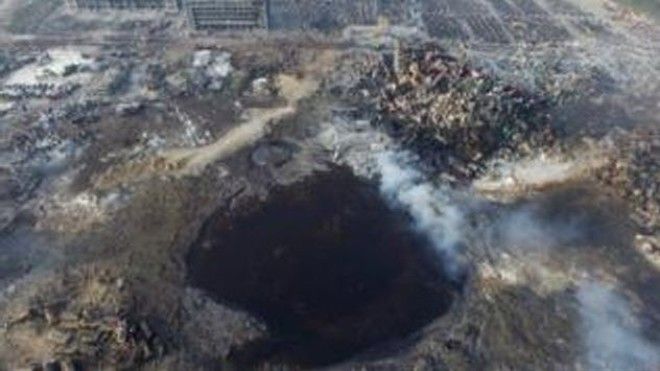
Nitrocellulose is produced by nitric acid reacting with cellulose. It is highly flammable and exhibits low toxicity. Nitrocellulose is classified as an explosive if the nitrogen content exceeds 12.6 percent.
The compound has been used since the 19th century in paint, plastics, propellants, nail polish, fireworks, pharmaceuticals, explosives, coatings, Ping-Pong balls, smokeless gunpowder, flash paper, and more. Nitrocellulose was also used in the early days of photography, X-ray, and film production.
In 2015, a series of explosions occurred in a chemical factory in Tianjin, China. It was one of the deadliest industrial accidents in the country’s history, resulting in 173 dead or missing people, over 300 damaged buildings, more than 12,000 destroyed cars, and $1.1 billion in economic losses.
Firefighters and police were the majority of the dead, and eight bodies were never recovered. An investigation found the source of the explosion to be nitrocellulose, which had caught on fire and further spread the flames to ammonium nitrate fertilizer.
A total of 49 staff and government officials were jailed for taking part in the firm’s illegal operations. Safety regulations for storing dangerous chemicals were “sidestepped” by the Ruihai Logistics chairman, who was found guilty of paying bribes to get away with the illegal business practices.
The head of the chemical factory received a suspended death sentence from the court. Others were sentenced for charges ranging from abuse of power to storing dangerous chemicals illegally.
2. Acetone Peroxide
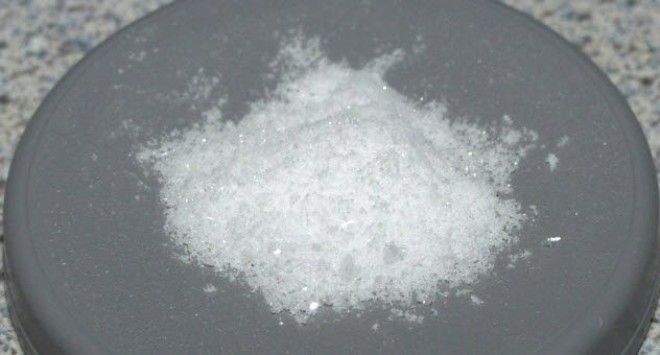
Acetone peroxide was one of the first chemicals to cause the UK government to clamp down on “Internet abuse” in 2005. Bomb-making instructions found on the Internet were identified as a serious threat.
A Home Office spokesperson said that they were working with G8 and European partners to tackle the sites and identify the individuals responsible. Anyone who downloads and attempts to follow bomb-making tutorials could also be guilty of the Act Preparatory to Terrorism offense established that year.
Common household ingredients—such as bleach, antiseptics, paint thinners, and powerful drain unblockers—can produce white acetone peroxide crystals when mixed in the right proportions. It is also used to make cosmetics and first aid products. With its easy availability, acetone peroxide has become the suicide bomber’s weapon of choice.
The correct chemical name of acetone peroxide is triacetone triperoxide (TATP). It has explosive power close to that of TNT, with high sensitivity to heat, friction, and mechanical shock. Reportedly, TATP is known as “Mother of Satan” among Islamic extremists for its devastating instability and the dozens of deaths caused by mishandling the substance.
In 2015, TATP was used in the Paris terrorist attacks. Seven of eight attackers set off shrapnel-packed bomb vests and killed 130 people while leaving 99 others seriously injured. Being easy to make and hard to detect, TATP was the key ingredient in the bombs. It was also used by the infamous “shoe bomber” in 2001. Later, in 2005 and 2006, TATP attacks occurred in London, Texas City, and Oklahoma.
1. Nitroglycerin

Nitroglycerin is a volatile vasodilator frequently used in treating or preventing attacks of chest pain. It widens blood vessels, making it easier for the heart to pump.
However, overdosing on the chemical can lead to fever, confusion, headache, dizziness, vomiting, trouble breathing, vision problems, bloody diarrhea, fainting, cold skin, increased heart rate, seizures, and death. Also, using nitroglycerin and erectile dysfunction medicine at the same time can cause a sudden and serious decrease in blood pressure.
Instead, nitroglycerin can be used to treat erectile dysfunction itself. It is the key ingredient in a gel product that was tested on 220 male participants. Researchers in the UK found that applying a blob of the gel roughly the size of a pea resulted in almost 50 percent of the participants getting an erection within five minutes, making the gel up to 12 times faster than Viagra. About 70 percent of the participants had an erection after 10 minutes.
Millions of people could have a blast with the help of this explosive solution. Approximately 40 percent of American men past age 40 are affected by erectile dysfunction. Viagra and other impotence-relieving drugs need 30–60 minutes to take effect.
Even then, roughly 30 percent of men who have tried them reported the drugs to be ineffective. Other complaints include headaches and an upset stomach. Although the gel can cause headaches as well, researchers hope to eliminate any side effects by tweaking the formula. The product could be commercially available by 2019.
Despite its medical properties, nitroglycerin is primarily used in explosives. Nitroglycerin was made by Ascanio Sobrero in 1846 and turned out to be the first explosive stronger than black powder. Alfred Nobel was the first to produce nitroglycerin on an industrial scale after detailed studies.
A blasting cap, a wooden plug filled with gunpowder, which could be detonated by lighting a fuse was his first major invention. That was used to explode the surrounding nitroglycerine.
Alfred Nobel’s priority was to improve mining with the explosive. One of his most important discoveries was a mixture of nitroglycerin and kieselguhr that could be turned into a kneadable paste.
The paste was shaped into rods suitable for insertion into drilling holes. Nobel developed a blasting cap which allowed detonation under controlled conditions and named the paste dynamite.

